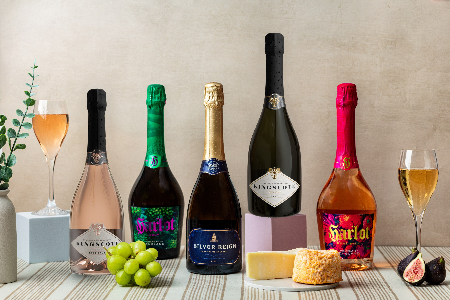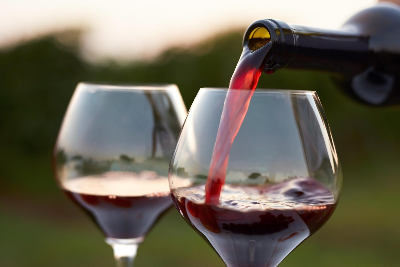As one of the world’s most popular drinks, it comes as no surprise that wine finds itself the hot topic of many social discussions. As experts in the wine industry, we regularly get tons of queries and questions from wine enthusiasts.
The primary goal of this post is to make it simple to offer solutions to all of the asked queries and tricks from wine lovers around the world.
In this blog, we've concentrated on six of the most frequently asked questions that you guys generally send our way.
This blog will be specifically focused on wine bottle opening tricks, the lasting period of various wines once corks are removed, the calorie levels in wine, and the differences between rice wine and rice vinegar.
These six questions and answers will help wine enthusiasts understand the different aspects of wine and should give you a little more insight into the world of wine, in general. So, let's get started.
How long does wine last once opened?
When you open a bottle of wine, it naturally begins to oxidise and the flavour begins to change.
How long it lasts depends on several factors, including the type of wine you’ve opened, how well it's sealed and importantly, how you store it.
- Light white wine generally lasts around 5 – 7 days in the fridge if re-corked (screw top re-applied). Red wine may last three to five days if re-corked and kept in a cool and dark space (usually a pantry or a wine cellar is preferable but a cupboard works just as well providing it’s not too warm).
- Once opened, sparkling wines like Champagne and Prosecco immediately begin to lose their carbonation. Even if you use a specific stopper or bottle topper, in an English sparkling wine bottle, the wine will only really be drinkable for approximately 1 – 3 days in the refrigerator afterwards, before it loses its fizz. This is true even if you try to keep the whole bottle. Like we needed an excuse to finish the bottle.
- Full-bodied white wine should last 3 – 5 days after opening if refrigerated and re-corked straight afterwards.
- Fortified wines, often known as dessert wines, are slightly different and may well keep for up to 4 weeks after being opened, provided they are re-corked and kept in a cold, dark area (below 70 degrees F).
- Bag-in-box wine may be stored in the fridge for up to 4 – 6 weeks after opening.
Wines that contain more tannins, which are the bitter chemicals found in grape skins, seeds, stems, and oak barrels, are better shielded from oxygen and have a longer lasting period.
To help your wine last as long as possible, be sure to store it in a cool, dark place once opened (or even the refrigerator if you’ve opened a sparkling wine or white wine).
As a general rule, If you have any leftover wine, be sure to reseal the bottle tightly and use it within a few days. Again if you’re anything like us, there’s certainly no excuse needed to finish that bottle.
How many calories are in a large glass of wine?
A large glass of wine generally contains around 200 calories. Between 120 and 140 calories are usually found in standard-sized wine glasses. According to the USDA report, wine has 83 calories per 100 grams on average, so we’ve broken these down further by category below.
- White wine: A 175ml glass of white wine has 159 calories, which is almost the same as half a burger in terms of a food comparative.
Calories might add up to around 228 for a large glass of white wine (250 ml), bearing in mind the actual wine you’re drinking will include a variable calorie count due to its ingredients. On average however, around 100 grams of white wine contains approximately 82 calories, according to the USDA.
- Red wine: One regular, medium-sized 175ml glass of red wine has 160 calories. Additionally, a big 250 ml glass may have up to 230–235 calories in it, which is more than a jam doughnut (mind we can honestly say we’ve never got home from a busy day at work, put our feet up and immediately craved a jam doughnut) .
The USDA estimates that around 100 grams of red wine contains approximately 85 calories. Compared to other wines, red wine has more calories, again subject to the individual wine being consumed.
- Rosé wine: Roughly 147 calories are included in a 175 ml glass of rose. Compared to white and red wine, rosé wine often has fewer calories, so for those of us calorie counting - Rose may just be your new favourite substitute.
However, this is not always the case and may depend on the particular types and brands of wine.
A glass of wine from a higher-end vineyard, for example, may have more calories than a glass of wine from a cheaper winery.
Wine's calorie count also depends on how sweet it is and how much alcohol it contains, so all food for thought.
Usually, a wine glass with a higher alcohol percentage has more calories than a wine glass with a lower alcohol content.
Similarly, a glass of sweet wine may have more calories than a glass of dry wine.
Is rice wine the same as rice vinegar?
There is, as you might expect, a difference between rice wine and rice vinegar. While rice vinegar is a vinegar manufactured from rice that has been treated with acetic acid, rice wine is an alcoholic beverage prepared from fermented rice. They do, however, share certain similar characteristics.
Both have a slightly acidic flavour and are, unsurprisingly, derived from rice. However, rice wine has a greater alcohol concentration and is sweeter than rice vinegar, trust us you won’t be in any hurry to enjoy a nice glass of rice vinegar with your meal (at least we’d like to hope not).
They vary in flavour and of course their primary purpose. Asian cuisine often includes rice wine as an ingredient. In salad dressings, rice vinegar is often used as a condiment.
Apple cider vinegar is an excellent substitute for rice vinegar, while pale dry sherry or dry white wine are suitable alternatives to rice wine.
What can I use instead of white wine vinegar?
There are a few different types of vinegar that can be used as a substitute for white wine vinegar.
These include apple cider vinegar, balsamic vinegar, and red wine vinegar, all subject of course to the dish they’re being used in.
Each of these vinegars has a rather different flavour profile, so it’s important to choose one that will best complement the dish you are making.
Apple cider vinegar is the most mild-flavoured of the three, while balsamic vinegar is the richest and most complex. Red wine vinegar is somewhere in between these two, with a slightly fruity flavour.
If you need a vinegar with a similar flavour, you can use apple cider vinegar, champagne vinegar, or white balsamic vinegar.
If you need a vinegar with a similar acidity, you can use any other type of vinegar, such as red wine vinegar, rice vinegar, or cider vinegar.
If you need vinegar for cooking, any type of vinegar will work, although the flavour will of course be different.
How to open a wine bottle without a corkscrew or a bottle opener?
There are many tricks to opening a bottle of wine without a corkscrew or a bottle opener.
We’re sure you all have your own party tricks or at least know somebody who does, so we thought we’d share our top tips and hacks for getting into that all important bottle of wine:
Using A Knife
If a knife is your chosen tool, then the blade should be inserted into the cork, and the cork should be twisted upward. Take the knife out, insert it again sideways, and then just twist the cork out in a circular motion until you have approximately an inch or so of cork to deal with.
Using a hammer and screw
Unorthodox we know, but for the wine loving DIY’ers among us, this one’s for you. To begin, use a screwdriver to twist a screw into the cork just enough to keep the majority of the screw outside the cork. NOTE: Do not push the screw too far into the bottle. Pull the screw out in a single motion with the hammer's claw… and… voila.
Using A key
Much like a corkscrew, insert your key of choice at a slight angle, leaving only a small portion of the key outside the cork. To turn the cork counterclockwise, up, and out of the bottle, use the top of your vehicle key. The idea here is to simultaneously lift and rotate the object in a circle to release the cork in a smooth motion.
Using a wire hanger
Life Hack: Turn a leftover wire coat hanger into a corkscrew (we’re always doing our bit to recycle where we can). With just a few rapid twists, the cork may now be removed from the bottle with relative ease.
Using shoes with a high heel or platform sole
Ok so first, let us just intervene at this stage and explain that this would certainly not be our first choice, however we’ve all been there where the bottle of wine is needing to be drunk and there’s just no alternate tools to open it, anywhere in the local vicinity.
So, do this hack outside in case wine spills and be sure to keep your distance from the bottle to prevent getting wine on your clothing.
Before inserting the bottle's bottom into the sole of your shoe, make sure all the wrapping around the cork has been removed.
Smack the sole of the shoe a few times against a solid wall while holding the wine bottle in the shoe (yes that is genuinely a method that works).
The cork will start to progressively come free, so you can then gently remove it. It might also break out in a burst of wine, which would cause the bottle to froth, this would explain our previous advice to remain outside and to the side of the bottle when attempting this method.
Conclusion
In summary, these were some of the most frequently asked questions and queries from our consumers.
There are, undoubtedly, many more questions we’re asked on a regular basis and we endeavour to share the answers to those with you all very soon.
We hope you’ve found this post to be beneficial. So, if you’d like to see more like this kindly share and keep in touch with us and of course, please feel free to get in touch with us at any time if you have any more enquiries or want to learn more about wine.

















